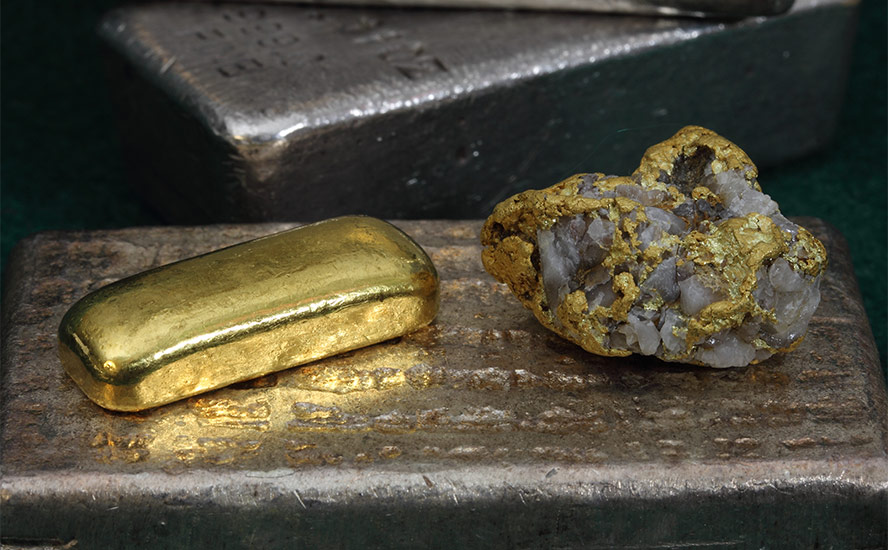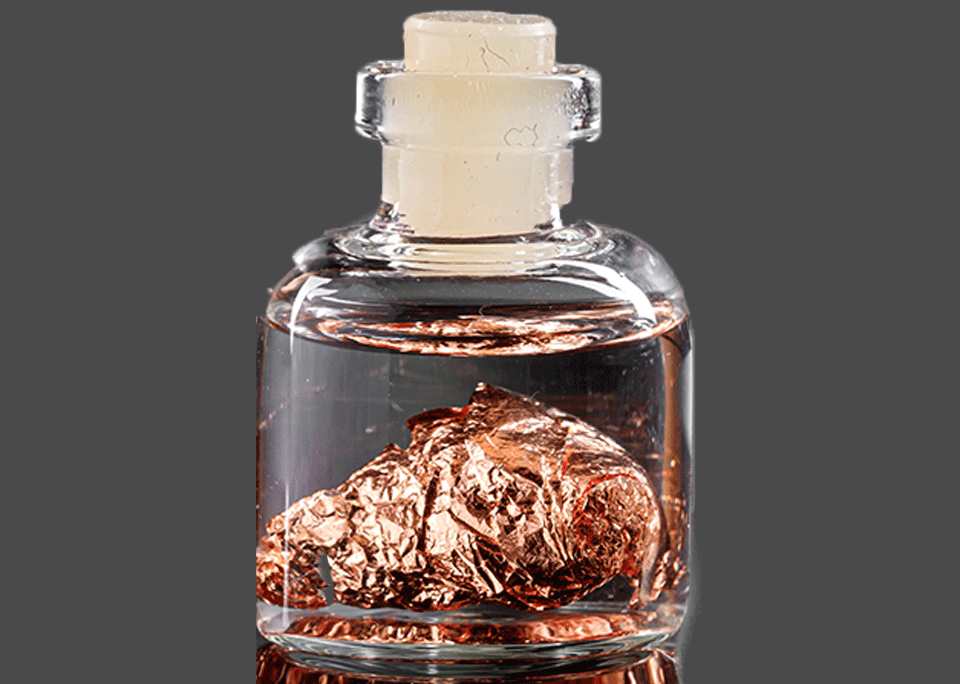2020.09.29
Despite recent pullbacks, the bull markets for silver and gold are fully intact, and Mexico is a highly sought-after destination for mining capital. The Latin American country led the number of gold financings in June, garnering $606.6 million compared to second-place China and third-ranked Quebec.
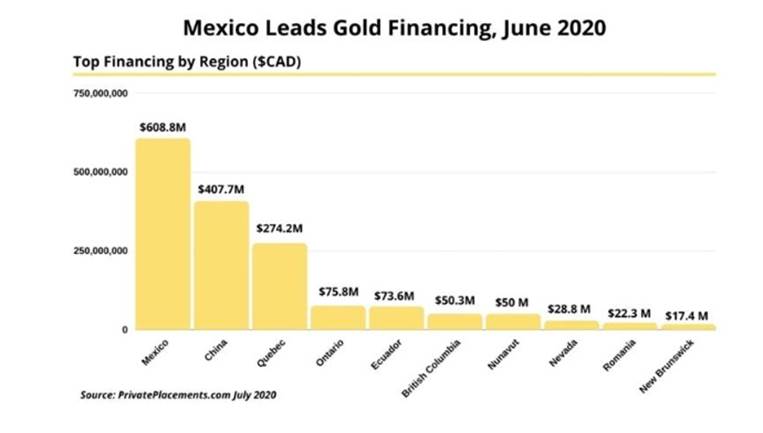
According to the US Geological Survey, Mexico is by far the largest silver producer, outputting 6,300 tonnes in 2019, followed by Peru and China, at a respective 3,600t and 3,800t. The country’s terrain is some of the most tectonically active on Earth.
Mexico is an established mining jurisdiction with no evidence of resource nationalism, unlike other Latin American nations like Peru, Ecuador and Venezuela.
Mining being an important contributor to the economy, the industry benefits from a well-structured and supportive regulatory framework.
According to export.gov, Mexico is the world’s fourth largest recipient of foreign direct investment for mining, and the second largest destination of mining FDI in Latin America.
Sinaloa State is front and center, particularly the Sierra Madre region where a number of exploration plays are taking shape.
Two companies operating there, Vizsla Resources (TSX-V:VZLA) and GR Silver Mining (TSX-V:GRSL), have seen their shares double and triple on bonanza-grade gold and silver discoveries, sending their market caps well above $100 million.
Brigadier Gold’s (TSX-V:BRG) Picachos silver + gold property is equidistant (15 miles away) between them, on the same geological trend.
Sinaloa State
The far western state of Sinaloa – across from the Baja California and hosting the resort city of Mazatlán – has an interesting silver-mining history.
By the 1560s, it became common knowledge that gold and silver were plentiful in Sinaloa, and Spaniards began arriving in force to mine it. One of the first was Francisco de Ibarra, a Spanish explorer of Basque descent. After conquering Durango, Sinaloa’s neighbor to the east, Ibarra headed west across the rugged Sierra Madre Occidental mountains, driven by rumors of rich mineral deposits in what is now the state of Sinaloa.
As the story goes, while Ibarra was following the path of the modern-day Mexican Federal Highway 40, between Durango and Mazatlan, he struck pay-dirt. The lucky Spaniard discovered rich silver veins near the rural Sinaloan towns of Panuco and Copala, that were heavily mined for hundreds of years and continue to yield ore to this day.
After the 1500s, more silver deposits were discovered by Spanish adventurers, including major finds in areas east of Culiacan in northern Sinaloa. Throughout the 1800s, Sinaloan mining communities like Concordia, El Rosario and Panuco continued to yield massive amounts of silver and gold.
The mining industry even played a role in the siege and occupation of Mexico by France’s Napoleon III and his Second French Empire. In 1861, a heavily indebted Mexico owed France some 135 million gold francs, and was behind on its interest payments. Britain and Spain were also owed tens of millions in gold coins. The debt issue was one reason for France invading Mexico, another was mineral riches – Napoleon was no doubt aware of the amount of gold and silver being produced from Sinaloa and elsewhere in Mexico.
In the early 1860s, historians estimate up to US$5 million in silver – an enormous sum at the time – was flowing through the Port of Mazatlán annually. And that was only a fraction of Sinaloa’s total output, with most of the precious metal leaving the state via overland routes.
Picachos
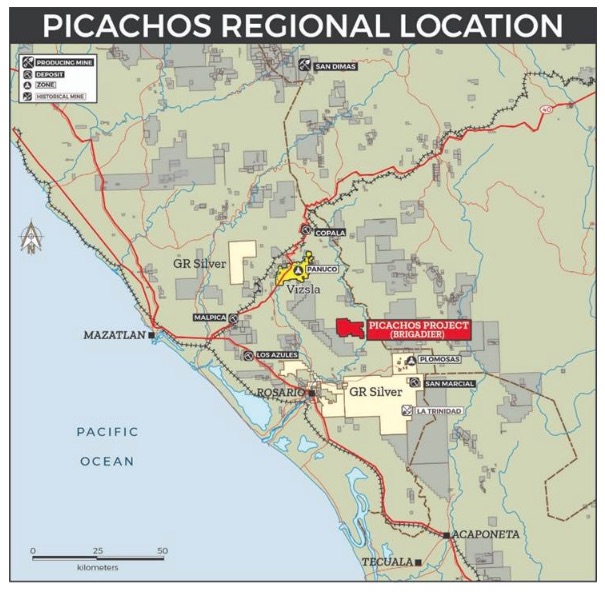
Last month Brigadier Gold signed an option agreement to acquire a 100% interest in the Picachos gold-silver property in Sinaloa State.
Picachos is a 3,954-hectare, drill-ready property centered over the historic “Viva Zapata” National Mineral Reserve due east of Mazatlán, in the municipality of El Rosario.
The project features over 150 historic mines and underground workings, high-grade veins open at depth, and it is road accessible, with drill permits and agreements with the local community already in place.
Primary targets include under-explored gold veins at the past-producing San Agustín mine, and La Gloria, a historic mine with rock samples containing 21.1 grams per tonne gold and 6 g/t silver across 0.8m.
Comprising four mining concessions, Picachos hosts two precious metal vein systems and a large porphyry copper prospect. It overlaps part of the western foothills of the Sierra Madre Occidental, one of the world’s largest silicic igneous provinces. Regional geochemical work at the turn of the millennium highlighted the reserve as one of the largest contiguous anomalies for gold and base metals.
It sits on one of the largest, most contiguous and highest amplitude anomalies for gold, silver and base metals in regional fine-fraction stream sediment samples in the Western Sierra Madre, with values up to 6,841 parts per billion (ppb) gold in fine-fraction, active channel stream sediments, according to the Mexican Geological Service (SGS), which staked and explored it in the 1980s.
Drill program
Brigadier Gold 5,000-meter, 40-hole drill campaign is targeting 4 high-grade gold-silver veins. The focus is on proving the potential for multiple veins; the depth, strike length and continuity of the veins; and understanding the source of the vein-hosted mineralization, along with its potential relationship to copper porphyry mineralization identified on the property.
At the San Agustín mine, about 665 meters of underground development has been completed. Underground sampling by a previous operator returned an average 81.22 g/t Au and 73.36 Ag across 1.2m. Values from the bottom of a 45-meter-deep production shaft were 185 g/t Au. In 2014, Vane Minerals test-mined three rounds from the south face. Average assay values were 15.8 g/t Au and 63 g/t Ag across a width of 2.5 m. The veins are open at depth and have never been drill-tested.
Along with San Agustín, the first-ever drill program at Picachos will zero in on the Mochomos vein, where a historic rock chip channel sample yielded 18.5 g/t Au and 570 g/t Ag over half a meter; the Los Tejones vein with values of 28.6 g/t Au and 114 g/t Ag across a meter; and the Fermin vein, which sampled 268 parts per million (ppm) Ag and 0.3 g/t Au over 1m.
The campaign will also include 3 line-kilometers of trenching, across a number of historical sample sites where anomalies have been identified, and drill targets can be formalized. Most of the holes – ranging in length from 90m to 300m – are expected to be at San Agustín and Los Tejones, with a few at Mochomos and other prospects.
In a Sept. 28 news release, Brigadier Gold states,
The center of the 2020 exploration campaign will be the past-producing San Agustín Mine which has exploited one of the ore chutes of the major east-northeasterly trending Cocolmeca Vein System (introduced in Company press-release dated 6 July 2020). In detail, the Cocolmeca Vein system is comprised of several sub-parallel veins over a 1.5 kilometre (km) wide zone marked in blue on the map, below. San Agustín is the best understood of these veins, mainly because it has been historically exposed underground by approximately 670 line-metres of tunnels, stopes and shafts. Geologically, it appears to be disrupted by the NW trending Genardo Fault. On the northeast side of the fault, the Tejones veins might correlate to San Agustín. Collectively, this first round of drilling is designed to test approximately 1 km of vein strike between the past-producing San Agustín Mine and the Tejones Prospects.
Watch an AOTH video with Brigadier Gold’s President & CEO, Ranjeet Sundher

Conclusion
Cashed up from a recent $4.2 million raise, Brigadier Gold is exploring a property that, despite having +150 historic mines and workings, has never seen a full-scale drill program. Until now.
Its neighbors to the north and south, Vizsla Resources and GR Silver Mining, have hit bonanza-grade gold and silver discoveries, causing their share prices to take off. Brigadier could have a big run too, if the drills find what management, and AOTH, is expecting them to, at the four targets centered around the past-producing San Agustín mine.
Interestingly, the project’s vendor, Michelle Robinson, is handling exploration and drill planning. Ms. Robinson, P.Eng, has detailed knowledge of the property, having assembled it some time ago. She speaks fluent Spanish, is a Qualified Person as defined by NI 43-101, and has authored more than 20 technical reports and has published several papers for the Society of Economic Geologists.
Picachos is a sleeper silver-gold play that just might take the market by surprise. The story is still largely undiscovered, leaving plenty of upside potential.
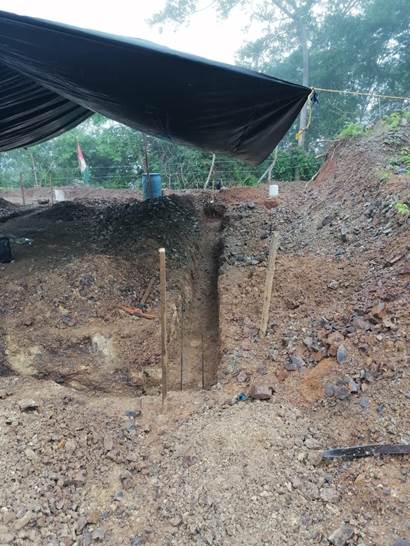
Brigadier Gold
TSX.V:BRG
Cdn$0.24, 2020.09.29
Shares Outstanding 56,303,865m
Market cap Cdn$13.5m
BRG website
Richard (Rick) Mills
aheadoftheherd.com
subscribe to my free newsletter
Ahead of the Herd Facebook
Legal Notice / Disclaimer
Ahead of the Herd newsletter, aheadoftheherd.com, hereafter known as AOTH.
Please read the entire Disclaimer carefully before you use this website or read the newsletter. If you do not agree to all the AOTH/Richard Mills Disclaimer, do not access/read this website/newsletter/article, or any of its pages. By reading/using this AOTH/Richard Mills website/newsletter/article, and whether or not you actually read this Disclaimer, you are deemed to have accepted it.
Any AOTH/Richard Mills document is not, and should not be, construed as an offer to sell or the solicitation of an offer to purchase or subscribe for any investment.
AOTH/Richard Mills has based this document on information obtained from sources he believes to be reliable but which has not been independently verified. AOTH/Richard Mills makes no guarantee, representation or warranty and accepts no responsibility or liability as to its accuracy or completeness. Expressions of opinion are those of AOTH/Richard Mills only and are subject to change without notice. AOTH/Richard Mills assumes no warranty, liability or guarantee for the current relevance, correctness or completeness of any information provided within this Report and will not be held liable for the consequence of reliance upon any opinion or statement contained herein or any omission. Furthermore, AOTH/Richard Mills assumes no liability for any direct or indirect loss or damage or, in particular, for lost profit, which you may incur as a result of the use and existence of the information provided within this AOTH/Richard Mills Report.
AOTH/Richard Mills is not a registered broker/financial advisor and does not hold any licenses. These are solely personal thoughts and opinions about finance and/or investments – no information posted on this site is to be considered investment advice or a recommendation to do anything involving finance or money aside from performing your own due diligence and consulting with your personal registered broker/financial advisor. You agree that by reading AOTH/Richard Mills articles, you are acting at your OWN RISK. In no event should AOTH/Richard Mills liable for any direct or indirect trading losses caused by any information contained in AOTH/Richard Mills articles. Information in AOTH/Richard Mills articles is not an offer to sell or a solicitation of an offer to buy any security. AOTH/Richard Mills is not suggesting the transacting of any financial instruments but does suggest consulting your own registered broker/financial advisor with regards to any such transactions
Richard owns shares of Brigadier Gold (TSX.V:BRG). BRG is a paid advertiser on his site aheadoftheherd.com
Legal Notice / Disclaimer
Ahead of the Herd newsletter, aheadoftheherd.com, hereafter known as AOTH.Please read the entire Disclaimer carefully before you use this website or read the newsletter. If you do not agree to all the AOTH/Richard Mills Disclaimer, do not access/read this website/newsletter/article, or any of its pages. By reading/using this AOTH/Richard Mills website/newsletter/article, and whether you actually read this Disclaimer, you are deemed to have accepted it.











